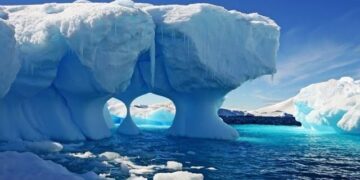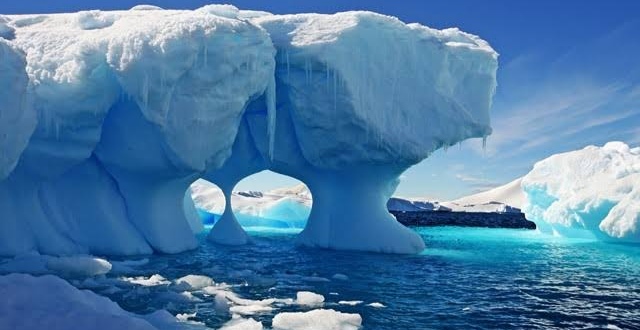By John Ikani
Antarctica’s coastal glaciers are shedding icebergs more rapidly than nature can replenish the crumbling ice, doubling previous estimates of losses from the world’s largest ice sheet over the past 25 years, a satellite analysis showed on Wednesday.
The new analysis, published in the journal Nature posits that if global heating is limited to 2C, the vast East Antarctic ice sheet should remain stable, but if the climate crisis drives temperatures higher, melting could drive up sea level by many metres.
The East Antarctic ice sheet (EAIS) holds the vast majority of Earth’s glacier ice. Sea levels would rise by 52 metres if it all melted. It was thought to be stable, but is now showing signs of vulnerability, the scientists said.
The consequences could be enormous. Antarctica holds 88% of the sea level potential of all the world’s ice, he said.
Ice shelves, permanent floating sheets of frozen freshwater attached to land, take thousands of years to form and act like buttresses holding back glaciers that would otherwise easily slide off into the ocean, causing seas to rise.
When ice shelves are stable, the long-term natural cycle of calving and re-growth keeps their size fairly constant.
In recent decades, though, warming oceans have weakened the shelves from underneath, a phenomenon previously documented by satellite altimeters measuring the changing height of the ice and showing losses averaging 149 million tons a year from 2002 to 2020, according to NASA.
Researchers say adhering to the climate targets set in the French capital in 2015 is fundamental.
The Paris Agreement brought together almost all the world’s nations for the first time in a single accord to reduce greenhouse gas emissions.
“The good news is that if we keep to the 2 degrees of global warming that the Paris agreement promises, the sea level rise due to the East Antarctic ice sheet should be modest,” Eric Wolff, a Royal Society research professor at the University of Cambridge, wrote in a commentary on the study.
Failure to curb greenhouse gas emissions, however, would risk contributing “many meters of sea level rise over the next few centuries,” he said.


































